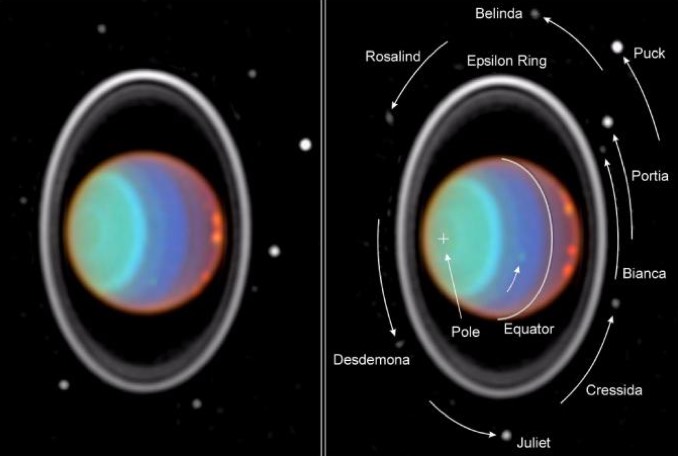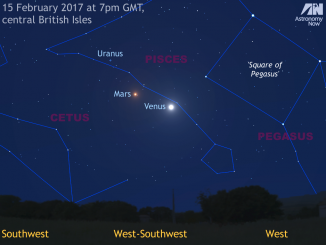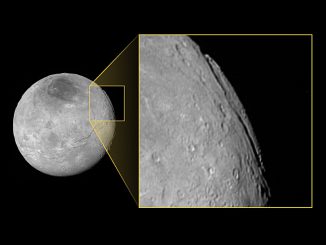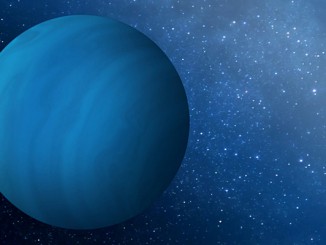
New computer simulations indicate a massive body twice the size of Earth or even larger crashed into Uranus during the formation of the solar system, knocking the gas giant on its side and possibly explaining to its colder-than-expected upper atmosphere and the formation of its rings and moons.
The research confirms a previous study that blamed such a collision with a protoplanet made up of rock and ice for Uranus’ oddball axial tilt – 97.77 degrees – roughly parallel to the plane of the solar system. As a result, the planet’s poles take turns facing the sun as Uranus swing around in its orbit, each experiencing 42 years of sunlight followed by 42 years of darkness. For comparison, Earth’s axis is tilted 23.5 degrees.
“Uranus spins on its side, with its axis pointing almost at right angles to those of all the other planets in the solar system,” said Jacob Kegerreis, a Ph.D. researcher at Durham University’s Institute for Computational Cosmology and lead author of a paper published in The Astrophysical Journal. “This was almost certainly caused by a giant impact, but we know very little about how this actually happened and how else such a violent event affected the planet.”
Kegerreis and a team of experts ran more than 50 impact scenarios using a “high-powered super computer” to recreate a variety of initial conditions, including the impacting body’s mass and the angle of the collision, to identify the most likely explanation.
“Our findings confirm that the most likely outcome was that the young Uranus was involved in a cataclysmic collision with an object twice the mass of Earth, if not larger, knocking it on to its side and setting in process the events that helped create the planet we see today.”
One major question mark is how Uranus managed to keep its atmosphere after such a cataclysmic collision. The simulations show it depends on the angle of the impact. A grazing collision would be enough to knock the planet on its side without blasting all of its atmosphere out into space.
The cold temperature of Uranus’ upper atmosphere, about -216 Celsius (-357 Fahrenheit), could be explained if debris from the impacting body formed a thin shell that trapped heat from the planet’s interior.
The research also could help astronomers tease out details about how Uranus’ moons and ring system formed and how the planet’s magnetic field ended up in its current off-center orientation.
“All the evidence points to giant impacts being frequent during planet formation,” said co-author Luis Teodoro, a scientist with NASA’s Ames Research Center. “With this kind of research we are now gaining more insight into their effect on potentially habitable exoplanets.”



